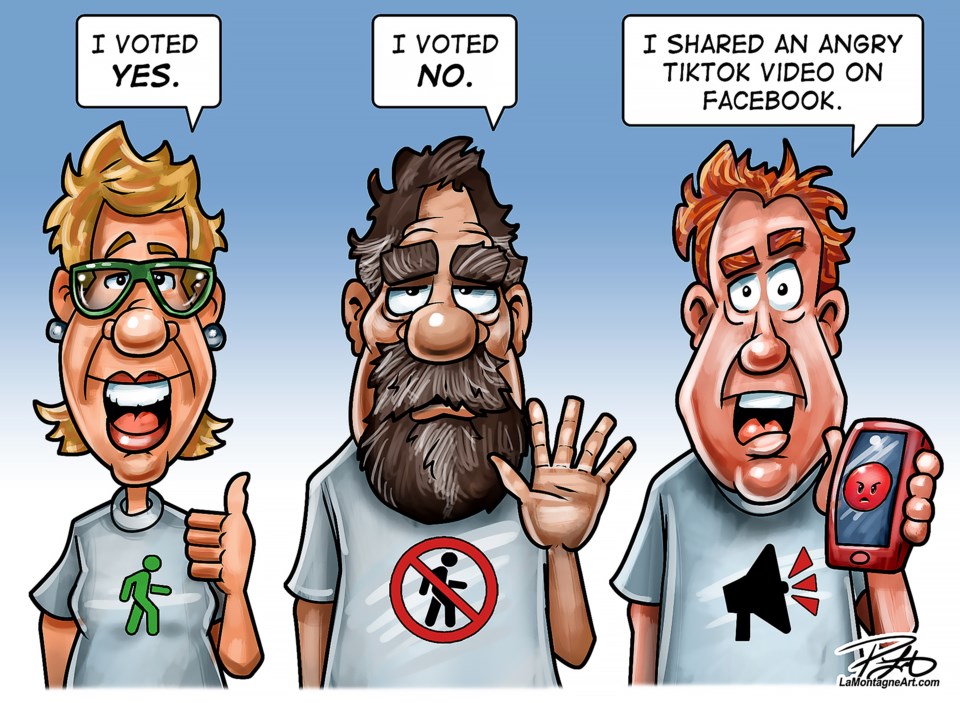The future of the Banff Ave. pedestrian zone in its existing form is crystal clear.
Banff residents took to the ballot box and gave a definitive answer the majority of voters wanted a number of concerns addressed before potentially having a pedestrian zone.
From increased traffic on residential streets, uncertainty with Parks Canada and whether it circumvented the federal legislated commercial cap and possible impacts on evacuation routes, residents gave direction that Banff council got it wrong.
But with the vote behind everyone, the question is what now?
The same traffic congestion issues will remain – albeit now more traffic will return to Banff Avenue rather than residential areas – and Banff will only continue to see increased tourism, particularly as Calgary and nearby communities of Okotoks, Cochrane and Airdrie grow.
Those concerns for Banff and the national park are not going away and are likely to continue to cause headaches.
The provincial government has clearly defined its mandate that tourism should grow, while Parks Canada has also encouraged people to enjoy its national parks.
Though national parks such as Wood Buffalo and Elk Island will see people visit each year, it’s a fraction of what Banff National Park gets. One only has to go into the national park and townsite on a summer long weekend to get an idea of the amount of interest.
With more than eight million vehicles passing through Banff National Park annually and an estimated half stopping to enjoy Canada’s premier park, the need to have discussions and find solutions has never been more important.
The pedestrian zone can see as many as 30,000-40,000 people use it during summer days, particularly on busy long weekends.
While there’s little doubt many residents and visitors enjoy the pedestrian zone, the issues raised by residents need to be addressed and remain unresolved.
Throughout recent months, many concerns brought forward by the no side were characterized and brushed aside as NIMBYism or dismissed as a few angry old people.
The reality shows otherwise.
The pedestrian zone has been a polarizing topic for not only community members, but also the relationship between the Banff field unit and Banff council and the Town of Banff.
Banff field unit superintendent Sal Rasheed was clear in a January 9 letter to council that Parks Canada believes it circumvents the federally legislated commercial cap.
Though supportive of its implementation in 2020 amid the COVID-19 pandemic and it allowing for social distancing, Rasheed stated in his letter those times were over and the pedestrian zone was contrary to federal law.
The two sides may have differing opinions, but it’s now imperative to come together to create an improved system in the townsite.
In recent years, the Outlook has written several editorials supporting the pedestrian zone.
The pedestrianization of communities – not only in Banff – offers promising ways to promote more active modes of transit and can create a centralized area for people to enjoy the townsite.
But for the foreseeable future, the car will remain king when it comes to visiting Banff and the Bow Valley.
The issues raised by residents are legitimate and ways to mitigate or resolve concerns needed to take place before or hand-in-hand with the evolution of the pedestrian zone.
While numerous reports and studies have been completed, an emphasis on public engagement and thoughtful and meaningful discussion must occur to fully flesh out and address concerns.
The answers can’t only be provided by the Town of Banff, but need to have Parks Canada, residents, the province, businesses and other stakeholders at the same table working together.




